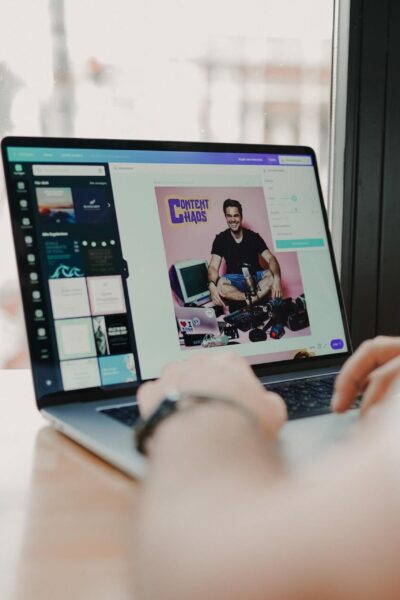A lot of businesses and individuals want to create a podcast, and see the benefit of podcasting. However, some find difficulty measuring the success of a podcast. When we conducted a user survey, the results showed that a lot of businesspeople shared the hesitation thatpodcasting is a lot of work for an unknown return. When marketers are used to relying on cut-and-dried analytics that deliver consistent key performance indicators (KPIs) for things like website traction, pay-per-click advertising, and social media engagement, it can be a struggle to prove that a podcast is worth it when measuring podcast performance remains challenging.
Although it is not as straightforward or simple as measuring other marketing efforts, there are ways to measure the return on investment (ROI) of podcasting for your business, and prove that it is one of the best investments you can make. ROI and content success are much more important than downloads and ad revenue when it comes to creating a podcast.
Ways to quantify success
Unique Downloads
Podcasts work differently than other forms of media. When a viewer clicks to watch a video on platforms such as Youtube, Vimeo or Facebook, you are able to know how many people actually watched that video, how long they watched, and even when they stopped watching or skipped sections.. Podcasts can either be streamed (like those videos), or downloaded. Once that file is downloaded, the host has to jump through a lot of hoops to find out how much of the podcast was actually listened to — or if it was listened to it at all.
The IAB recommends using “unique downloads” to measure the size of the listening audience. A unique download is a filtered statistic in which multiple download requests are attributed to the same overall listener. While there is room for error, and measuring downloads is not an exact science, this is probably the most accurate way to currently gauge your audience size.
Estimate Subscribers: Your Followers
While there is not currently a way to tell exactly how many subscribers a podcast has, there are some tricks to estimate how large the subscription base may be. It’s important to note that the vast majority of podcasts are provided for free, and subscription is similar to a Follow or Like on social media platforms, and not a paid subscription like a newspaper.
Look For Consistency
“In the absence of accurate subscriber data, the best way to understand the size of your subscriber base is to look at the degree of consistency in download totals between each episode. The larger the number of consistent downloads, the larger your subscriber base likely is. More importantly, look at the first 48 to 72 hours after you publish because this time is typically dominated by subscribers.” (Kathleen Booth)
Site and Social Traffic
While you cannot currently measure how many people are viewing your site or social media as a result of your podcast directly, you can measure the amount of traffic before launching your podcast and after to see if the numbers have grown. You can create a specific landing page on your website with a URL you give in your podcast or episode descriptions. Create a page on your website menu and track the traffic that page receives assuming that clicks to that page represent interest in the company podcast.
Other ways to measure success
Building relationships and trust
The number one benefit of podcasting that participants in our user survey selected was that with their audience. The benefits of podcasting are seen as many, and expanding and building trust through showcasing industry expertise and connections was their primary focus.
Things to measure: How many customers have you connected with as a result of the podcast? Have customers/clients/partners expressed confidence in your knowledge or relevance as a company? Is your company viewed as approachable because of the connection of podcasting?
Networking
In addition to building relationships with clients and customers to grow sales, building your network of industry professionals is also important to growing your business.
Things to measure: Have you been able to bring industry related guests on to your podcast? Have you been able to be a guest on other industry related podcast? Have you built any partnerships through your podcast?
Reviews
Reviews are a helpful and easy way to see the unique influence your podcast has. Encourage listeners to leave reviews. If you send your podcast out in a company email, ask for feedback in the email.
Things to measure: Have any listeners expressed an appreciation for the podcast? Have any listeners expressed a deeper understanding because of the podcast?
Social Media Engagement
Using social media as a way to market and share your podcast is also a way to track its success. Share links to your podcast and track the number of clicks on those links.
Things to measure: Are people sharing the podcast content on their social media? Are people liking or commenting on the post you share about the podcast?
Generating marketing content
Creating a podcast is not only helpful to the business for the sake of podcasting but also for the number of different types of content that can come as a result of the podcast. For example, e-books, blogs, social posts, etc.
Things to measure: Have you been able to create more content pieces from podcast episodes? Has your content calendar become more full? Have you been able to cross-promote pieces of content as a result of podcasting?
Learning/Training/Educating
Come Alive Creative suggests using your company podcast as a way of learning new information in your industry through self-education and guests. “Anytime we had a question, we interviewed the relevant experts to get our answers. The ROI of that podcast was worth the time and costs invested based on what we learned and what we were able to share with our audience.” Having employees listen to your podcast can be a form of training as well.
Things to measure: Have you learned new things that will help your company grow as a result of podcasting? Have your employees learned new things that will help them better serve your company? Have your clients/customers learned new things as a result of your podcast?
Remember Context
In any ROI measurement, it is important to remember the context of your market. The more specialized or niche your content and market are, the less relevant having high numbers is. It’s important to keep the context of how many people you could ideally be reaching in mind when looking at the numbers. For example, if your market is an audience of entrepreneurs in a specific industry and you have a few hundred listeners, that could be a win.
It’s important to keep in mind the goals for your company and what really makes the podcast worth it to you. And if you answered “yes” or “more than a couple” to the questions above, chances are, your podcast is paying off.
“While having access to a consistently, easily-measurable set of KPIs is every marketer’s preference, it is important to remember that the most meaningful metric of all is audience interest and engagement.” (Kathleen Booth)









